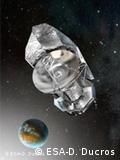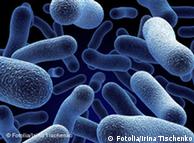Saturn receiving water from one of its moons, ESA spacecraft finds
The planet's upper atmosphere is marked by the presence of water. But
where it comes from has been a mystery until now. The ESA's Herschel
spacecraft has identified water shooting from jets on Saturn's Enceladus
moon.
The European Space Agency's (ESA) Herschel spacecraft has
identified the source of a water vapor ring surrounding Saturn. One of
Saturn's moons - Enceladus - spews 250 kilograms (550 pounds) of water
vapor into space every second. The announcement was published Tuesday on
the ESA's website.
Anywhere from three to five percent of that water ends up falling
onto the planet itself, influencing the chemical composition of its
atmosphere. No other moon in the solar system is known to do so.
The water expelled from Enceladus mostly erupts from jets in an area
of the moon's south pole known as the "Tiger Strips" for their
distinctive markings.
Paul Hartogh, of the Lower Saxony-based Max Planck Institute for
Solar System Research, led the analysis of data gathered by Herschel and
told Deutsche Welle the water emitted by Enceladus is "enough to
explain the amount of water first discovered in Saturn's atmosphere" in
1997.
 The ESA spacecraft Herschel observed Saturn's moons"The
reason why so much water is produced is not clear," he said. "Of course
you have this warm area in the south - and that is probably created by
some tidal forces - but the exact mechanism is not know. The amount of
energy dissipating due to tidal forces is actually not enough to explain
why so much water is produced there." The ESA spacecraft Herschel observed Saturn's moons"The
reason why so much water is produced is not clear," he said. "Of course
you have this warm area in the south - and that is probably created by
some tidal forces - but the exact mechanism is not know. The amount of
energy dissipating due to tidal forces is actually not enough to explain
why so much water is produced there."
Water for life
According to Tilman Spohn, of the German Aerospace Center's Institute
of Planetary Research in Berlin, the discovery is a puzzling one which
gives rise to more questions than it answers.
Enceladus' eruptions are surprising for a body of its size, he said. A
general assumption is that the larger a body in space is, the more
unstable and active it becomes.
"This thing is (actually) too small to generate volcanic activity and
generate heat," Spohn told Deutsche Welle. "There is much more heat
output than you would expect for a body like that."
Yet beyond Enceladus' inexplicable qualities, the moon has caught
scientists' interest in part because the presence of liquid water is a
prerequisite for life as we know it.
"There is speculation about Enceladus being habitable for microbial
life forms - nobody has discovered anything like that yet, but it is a
body of particular interest in terms of life outside the earth," Spohn
said.
Compared with Earth
Walter Schmidt, a specialist on planets and comets at the Finnish
Meteorological Institute of Helsinki, says Enceladus seems to be covered
by an ice cap with water underneath.
 Life as we know it - however small - requires liquid waterAn
early explanation for the eruption of water could be Saturn's
gravitational pull on its moon, he said. Other moons of Saturn also have
eruptions, although they spew materials other than water into space. Life as we know it - however small - requires liquid waterAn
early explanation for the eruption of water could be Saturn's
gravitational pull on its moon, he said. Other moons of Saturn also have
eruptions, although they spew materials other than water into space.
Because of the low pressure in space, the water coming from Enceladus
becomes a vapor can't remain in its liquid form or freeze, which is why
it becomes vapor, according to Schmidt. The water vapor is then broken
down into hydrogen and oxygen by UV light and collisions with solar wind
particles. That "basically ensures that water molecules are not stable
in space," he added.
Schmidt says studying the conditions on Saturn and Enceladus can help
scientists to "understand what makes Earth so special" in its ability
to sustain life and explain "how water came here to Earth in the first
place."
The spectroscopic capabilities of Herschel allow the spacecraft to
distinguish between water, oxygen and hydrogen, Schmidt added.
"Water has a very characteristic spectral distribution and can be
detected rather easily," he said. "Once it disassociates these spectral
properties are gone, one has to look separately for oxygen lines and
hydrogen lines."
Author: Gerhard Schneibel
Editor: Cyrus Farivar
http://www.dw-world.de/dw/article/0,,15272866,00.html
| 








